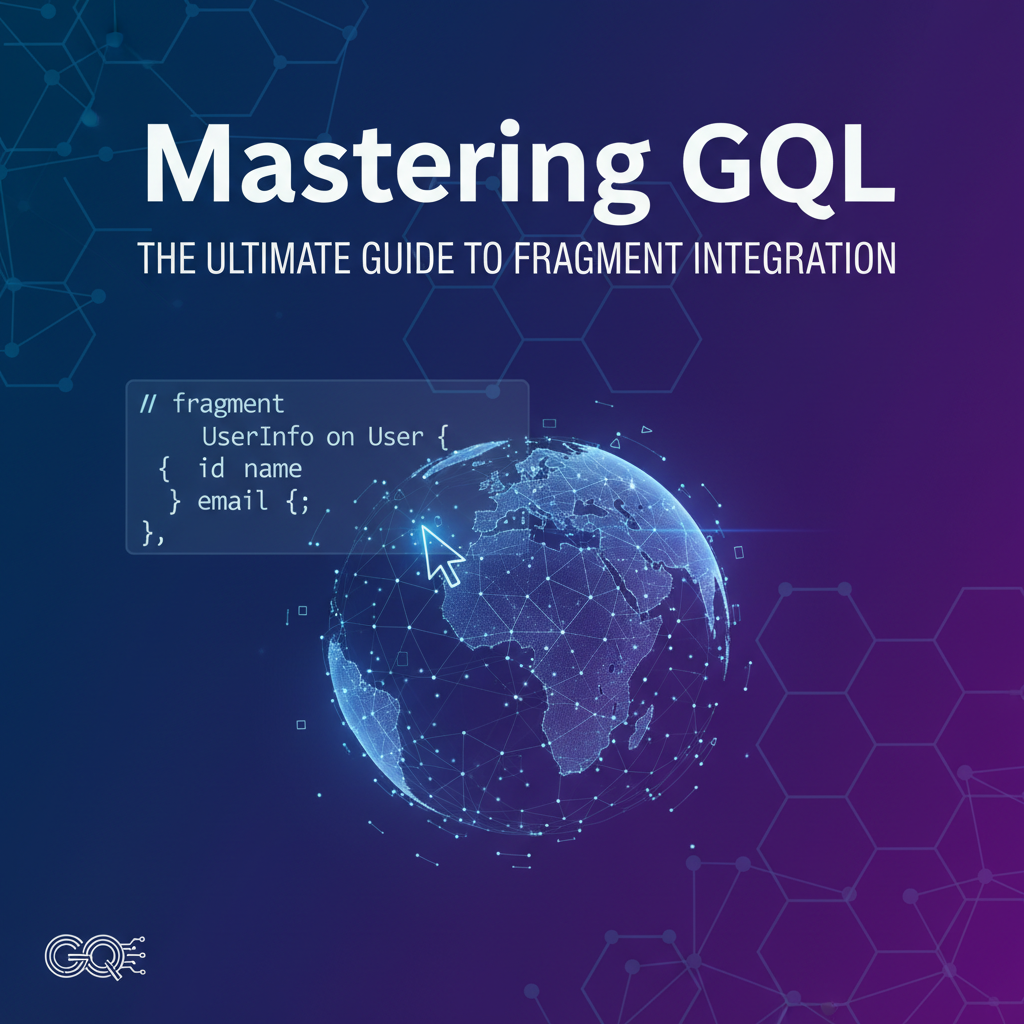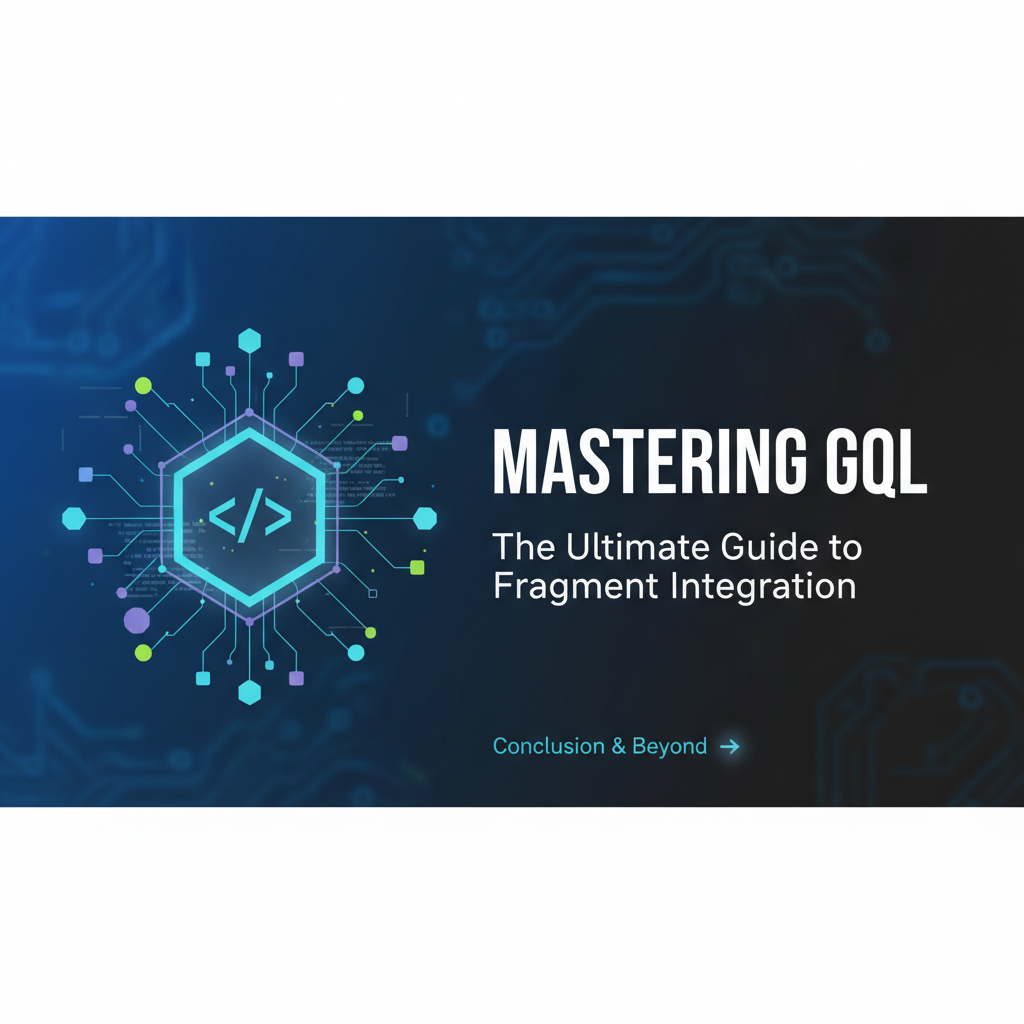Mastering GQL: The Ultimate Guide to Fragment Integration

Introduction
GQL, or GraphQL, has revolutionized the way we interact with APIs. With its ability to request specific data, it offers developers a more efficient and flexible alternative to traditional RESTful APIs. One of the key aspects of GraphQL that sets it apart is its support for fragments, which allow for the reuse of query and mutation pieces across different parts of a query. This guide will delve into the concept of fragment integration in GraphQL, providing you with the knowledge to master this powerful feature.
Understanding GraphQL Fragments
What is a Fragment?
In GraphQL, a fragment is a reusable piece of a query or mutation that contains a selection set. These fragments can be referenced within queries, mutations, or other fragments, allowing for the reuse of complex query pieces without duplicating the query structure.
Types of Fragments
There are two types of fragments: inline fragments and named fragments.
- Inline Fragments: These are defined directly within a query or mutation.
- Named Fragments: These are defined separately and can be referenced by name.
Advantages of Using Fragments
- Reusability: Fragments can be reused in multiple queries and mutations, reducing code duplication.
- Scalability: As your application grows, fragments help maintain a clean and manageable query structure.
- Performance: By reducing the amount of data fetched, fragments can improve the performance of your application.
Integrating Fragments in GQL
Step 1: Define Your Fragments
Start by defining your fragments within a query or mutation. You can do this by using the fragment keyword followed by the fragment name and selection set.
fragment UserFragment on User {
id
name
email
}
Step 2: Reference Fragments
Once your fragments are defined, you can reference them in other queries, mutations, or fragments using the ...on FragmentName syntax.
query {
user(id: "1") {
...UserFragment
}
}
Step 3: Nested Fragments
You can also use fragments within other fragments. This is known as nested fragments.
fragment UserDetailsFragment on User {
...UserFragment
address {
street
city
}
}
APIPark is a high-performance AI gateway that allows you to securely access the most comprehensive LLM APIs globally on the APIPark platform, including OpenAI, Anthropic, Mistral, Llama2, Google Gemini, and more.Try APIPark now! 👇👇👇
Best Practices for Fragment Integration
- Keep Fragments Focused: Each fragment should have a single purpose. Avoid creating fragments that are too broad.
- Use Descriptive Names: Choose clear and descriptive names for your fragments to make them easier to understand.
- Avoid Circular Dependencies: Ensure that your fragments do not create circular dependencies, which can lead to infinite loops.
Implementing Fragments with APIPark
APIPark is an open-source AI gateway and API management platform that supports GraphQL. It allows developers to easily manage, integrate, and deploy AI and REST services. With APIPark, you can leverage the power of fragments to create efficient and scalable GraphQL APIs.
Creating Fragments with APIPark
To create a fragment in APIPark, follow these steps:
- Go to the APIPark dashboard and select the API you want to work with.
- Navigate to the "Fragments" section.
- Click on "New Fragment" and define your fragment using the GraphQL schema editor.
Reusing Fragments in APIPark
Once your fragments are created, you can easily reuse them in your queries and mutations within the APIPark interface.
Conclusion
Fragments are a powerful feature of GraphQL that can greatly simplify and improve the performance of your GraphQL APIs. By understanding how to integrate fragments into your GraphQL queries and mutations, you can create more efficient, scalable, and maintainable APIs. APIPark provides a robust platform for managing and deploying GraphQL APIs, making it easier to leverage the full potential of fragments in your applications.
FAQ
FAQ 1: Can fragments be used with non-GraphQL APIs?
Answer: No, fragments are specific to GraphQL. They cannot be used with non-GraphQL APIs.
FAQ 2: How do I create a nested fragment?
Answer: To create a nested fragment, define a fragment within another fragment. For example:
fragment NestedFragment on User {
...UserFragment
address {
...AddressFragment
}
}
FAQ 3: Can I use fragments to limit the fields returned by a query?
Answer: No, fragments do not have the ability to limit the fields returned by a query. However, you can achieve this by using the fields keyword within a fragment.
FAQ 4: What are the performance implications of using fragments?
Answer: The performance implications of using fragments are generally minimal. However, using fragments with a large number of fields or complex nested structures may impact performance.
FAQ 5: Can I use fragments to filter data?
Answer: No, fragments are not used for filtering data. Filtering is typically handled within the query itself using the appropriate filters and arguments.
🚀You can securely and efficiently call the OpenAI API on APIPark in just two steps:
Step 1: Deploy the APIPark AI gateway in 5 minutes.
APIPark is developed based on Golang, offering strong product performance and low development and maintenance costs. You can deploy APIPark with a single command line.
curl -sSO https://download.apipark.com/install/quick-start.sh; bash quick-start.sh

In my experience, you can see the successful deployment interface within 5 to 10 minutes. Then, you can log in to APIPark using your account.

Step 2: Call the OpenAI API.



